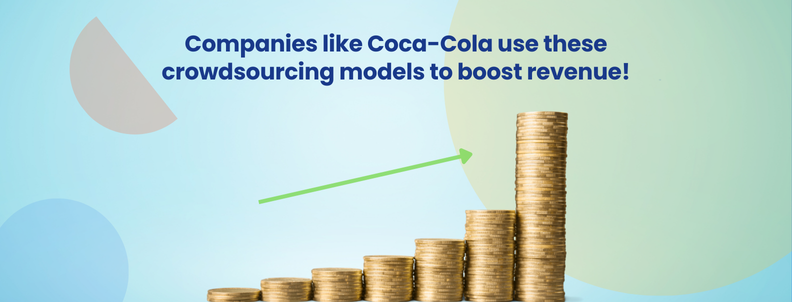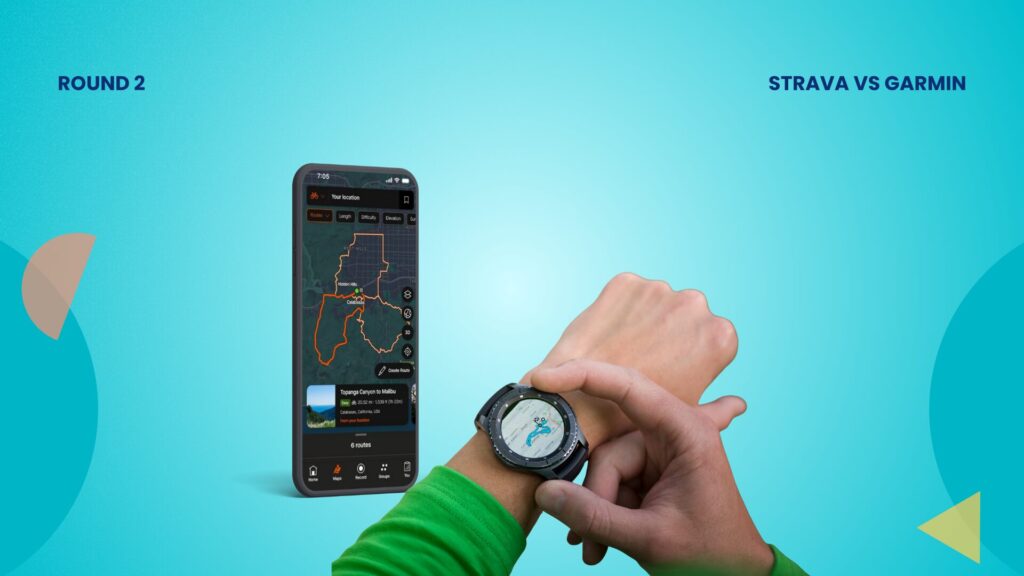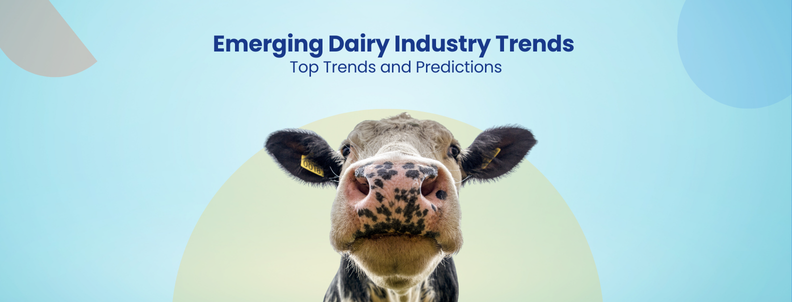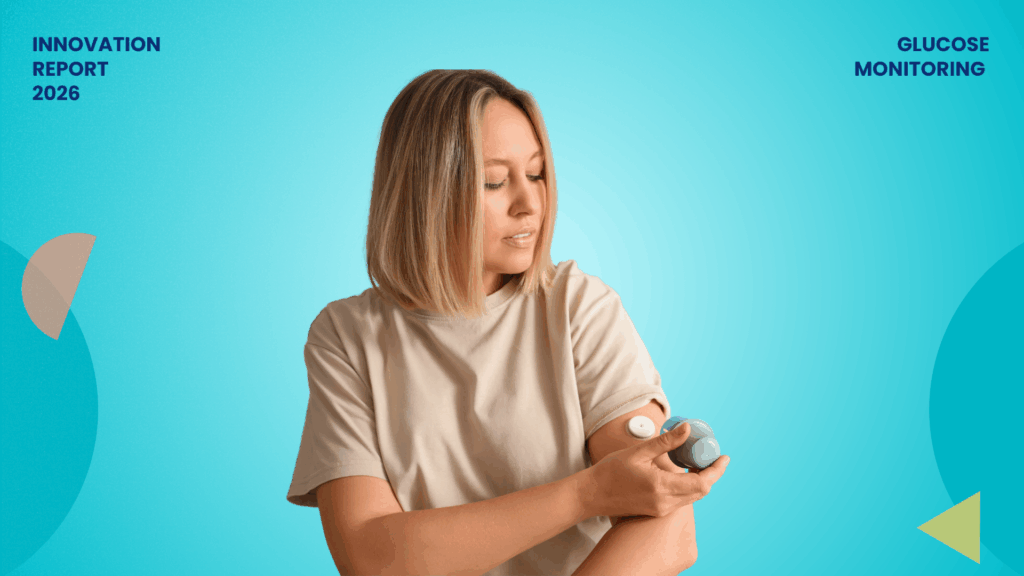Selecting the right crowdsourcing model is key to gathering actionable insights and validating ideas efficiently. Beyond solving specific challenges, it strengthens community engagement and drives scalable innovation. Companies like Coca-Cola and NASA have demonstrated how crowdsourcing can harness diverse perspectives to find solutions to complex problems.
For instance, Coca-Cola’s Freestyle vending machines leveraged consumer feedback to develop demand-driven flavors that resonated with their audience. Coca-Cola also utilized crowdsourced customer data to optimize vending machine inventory, ensuring machines were stocked with the most popular products based on local preferences and real-time demand. Similarly, NASA’s Space Apps Challenge invited participants worldwide to propose solutions for space exploration challenges, delivering innovative ideas in just two days.
These examples underline the versatility and power of crowdsourcing. To harness its full potential, organizations must choose the model that best aligns with their goals. Here are six major types of crowdsourcing that can help drive impactful, user-centric solutions:
1. Idea Crowdsourcing
The idea crowdsourcing process uses online platforms to collect ideas, solutions, and suggestions from a large audience. As a result, companies explore concepts beyond their internal resources to address challenges and find new opportunities.
Unilever’s Foundry platform is a prime example of idea crowdsourcing in action. Designed to connect the company with startups and innovators, the Foundry seeks fresh solutions for product development, marketing, and sustainability challenges. Through this platform, Unilever invites participants to propose ideas across key areas, exploring diverse expertise and perspectives.
One notable success of this initiative was developing a sustainable packaging solution that significantly reduced plastic usage.
Popular Platform for Idea Crowdsourcing – HeroX
HeroX hosts open competitions where organizations post specific challenges and invite innovative solutions from a global community. Designed to facilitate open innovation across industries, it enables companies to tackle complex issues in healthcare, technology, and sustainability.
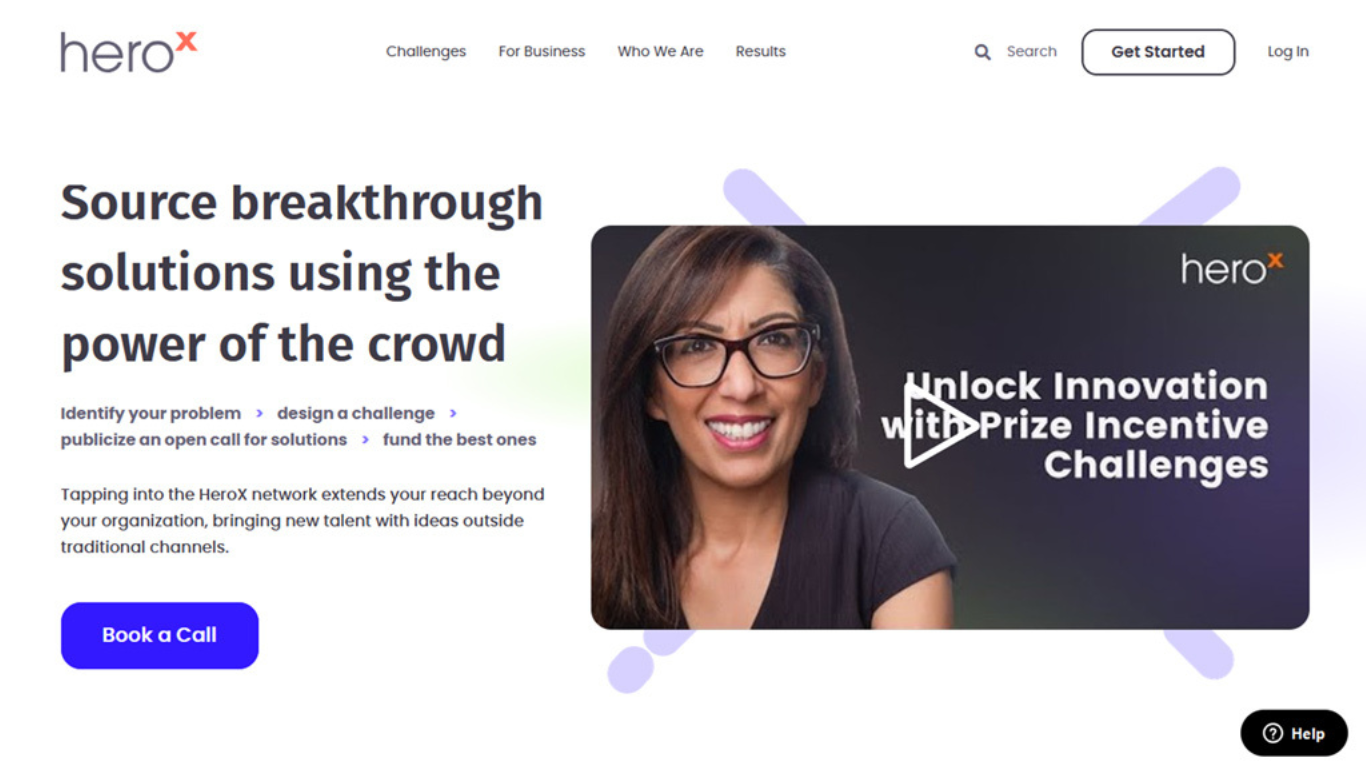
NASA’s “Space Poop Challenge” is an example where HeroX’s global reach helped gather ideas for a waste management system suitable for space missions. This challenge generated multiple feasible designs that could be tested and refined.
HeroX’s UI Overview and Key Features
The platform provides a streamlined interface that simplifies challenge creation and management for organizations. Key features include submission tracking, community engagement tools, and support for handling intellectual property. This structure enables smooth collaboration and communication, improving solution quality and making the process intuitive.
2. Crowdfunding
Crowdfunding leverages social media and dedicated platforms to link project creators with potential backers. By enabling small contributions from large audiences, it empowers individuals and companies to gather substantial capital, bringing new ideas to life with the support of engaged communities.
Platforms like Kickstarter and Indiegogo illustrate the versatility of crowdfunding as a method for raising capital by exploring broad networks of backers online.
Kickstarter operates on an all-or-nothing funding model, where project creators receive funds only if they meet their goals. This approach minimizes financial risk for backers, ensuring their money only supports fully funded projects. This builds trust and allows creators to pursue their visions with adequate resources.
Indiegogo, on the other hand, provides both fixed and flexible funding options. Its fixed funding follows Kickstarter’s all-or-nothing model. At the same time, the flexible option lets creators keep funds raised even if the goal isn’t fully met, giving creators flexibility depending on their project needs.
Popular Platform for Crowdfunding – Kickstarter
Kickstarter allows creators to raise project funds through a reward-based system. This model enables creators to gather support from a broad audience in exchange for rewards like early access to the product, exclusive merchandise, or other perks.
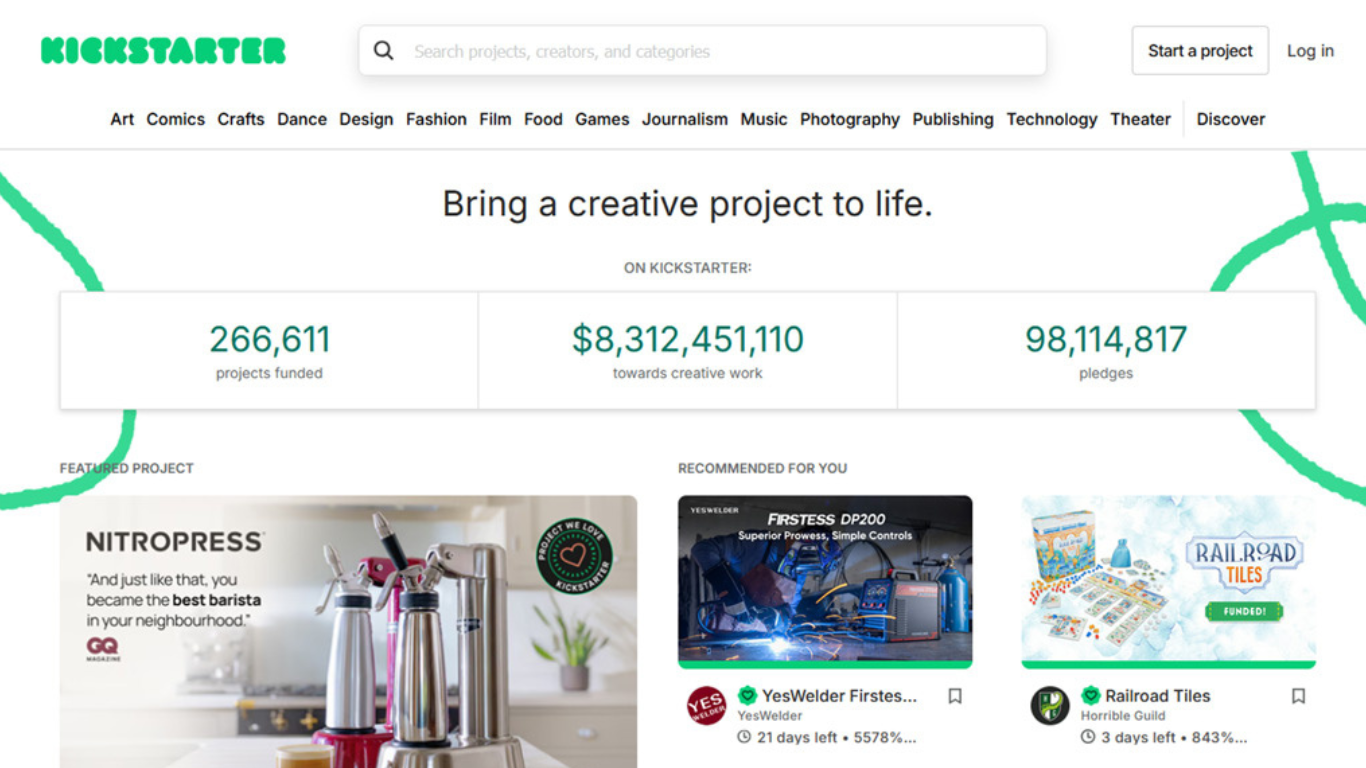
Kickstarter has funded several projects, including the Pebble Watch, the card game Exploding Kittens, and the virtual reality headset Oculus Rift S. These projects highlight Kickstarter’s role in turning creative ideas into successful, market-ready products.
Kickstarter’s User Interface and Key Features
Kickstarter’s platform offers an intuitive interface that guides creators through project setup, from defining funding goals to setting rewards. Features like project updates and direct communication with backers help creators keep supporters engaged throughout the campaign.
3. Crowd Voting
Threadless showcases the effectiveness of crowd voting in the design and fashion industry. The platform invites users to submit their designs, which are then voted on by the community. The most popular designs are turned into t-shirts and sold, allowing Threadless to gauge real-time consumer preferences and produce items that resonate with its audience.
Crowd voting relies on the collective input of a large audience to guide decisions and shape offerings. Companies can directly incorporate consumer preferences into product development by inviting the public to vote on specific options. This approach helps ensure that their offerings align with market demand.
4. Microtask Crowdsourcing
Amazon Mechanical Turk (MTurk) exemplifies microtask crowdsourcing by enabling companies to distribute large projects as small, manageable tasks to a global workforce. On MTurk, these tasks, known as Human Intelligence Tasks (HITs), are posted by requesters for workers to select and complete for a fee. Typical tasks include data entry, image tagging, and transcription, which, once completed, are aggregated to form comprehensive datasets.
This model offers a cost-effective, scalable solution for handling high-volume, repetitive tasks. By leveraging a distributed workforce, MTurk enhances efficiency and ensures data quality through redundancy and diverse perspectives, making it a valuable tool for businesses needing rapid, accurate results.
Popular Platform for Microtask Crowdsourcing – Foldit
Foldit is an online game developed by researchers at the University of Washington that turns the complex task of protein folding into a fun, competitive activity. Foldit invites players from all backgrounds to solve real-world scientific problems by folding proteins. This task plays an important role in medical research areas like HIV and Alzheimer’s disease.

Foldit players have made real contributions to science by predicting protein structures researchers had struggled to understand.
In one case, players solved the structure of a protein linked to an AIDS-related virus in just a few weeks—a problem scientists had been working on for years. This shows how Foldit can bring together people worldwide to help solve big scientific challenges.
Foldit’s User Interface and Key Features
Foldit’s interface is designed to be easy to use, even for people without a science background. Players get tools to adjust and fold protein structures, which helps them find stable shapes. The game provides visual guides and scores to show when a fold is more stable, making it simple for players to understand if their changes are moving in the right direction. A scoring system also keeps the game competitive, motivating players to find better solutions.
5. Design Crowdsourcing
This approach provides companies with a fast, cost-effective way to generate multiple design options across various styles. By tapping into a global community of creatives, design crowdsourcing allows organizations to harness collective creativity and explore innovative ideas, making it ideal for tackling design challenges and identifying fresh opportunities.
99designs connects businesses with a diverse pool of designers through a simple contest model. Clients submit a design brief outlining their needs, and designers worldwide respond with unique concepts. The client selects their favorite design, ensuring they receive high-quality, creative solutions tailored to their specifications.
Popular Platform for Design Crowdsourcing – DesignCrowd
Through DesignCrowd, clients post detailed briefs, inviting designers to submit proposals in a competitive format. This approach provides clients with diverse creative ideas, allowing them to choose a design that best aligns with their vision. Clients can also work directly with designers to refine and finalize their projects, ensuring the final product meets specific needs.
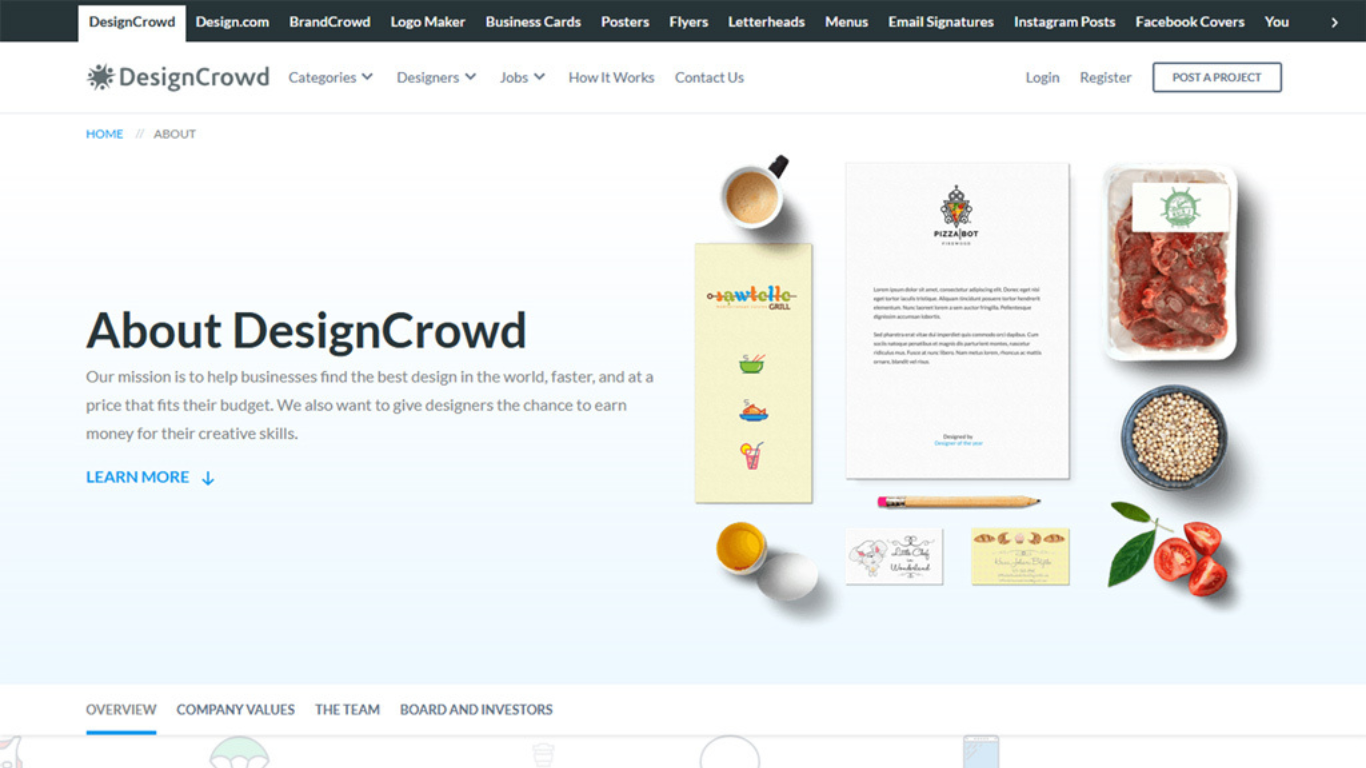
DesignCrowd has supported various design projects, from logo creation to website layouts, delivering successful outcomes for numerous brands.
DesignCrowd’s UI Overview and Key Features
The interface is streamlined for ease of use, allowing clients to post briefs, review submissions, and provide feedback efficiently. The platform includes features such as designer portfolios, project management tools, and an intuitive feedback system that makes the design process transparent and organized.
6. Citizen Science
Citizen science leverages people-driven research by involving non-professionals in data collection and analysis. This approach expands research capacity and accelerates data gathering, enabling projects to access a broader input range while fostering public engagement in science.
Zooniverse showcases the application of citizen science by engaging volunteers in diverse scientific research projects. Participants on the platform contribute to tasks like galaxy classification, historical document transcription, and wildlife monitoring. Researchers analyze the data gathered, providing valuable insights across various scientific fields.
Popular Platform for Citizen Science – Wazoku Crowd
Wazoku Crowd, formerly InnoCentive, connects organizations with a global problem-solver network to tackle specific challenges and drive innovation. By posting their problems on Wazoku Crowd, companies can tap into a diverse community of experts and creative thinkers who contribute fresh ideas to help solve these issues.
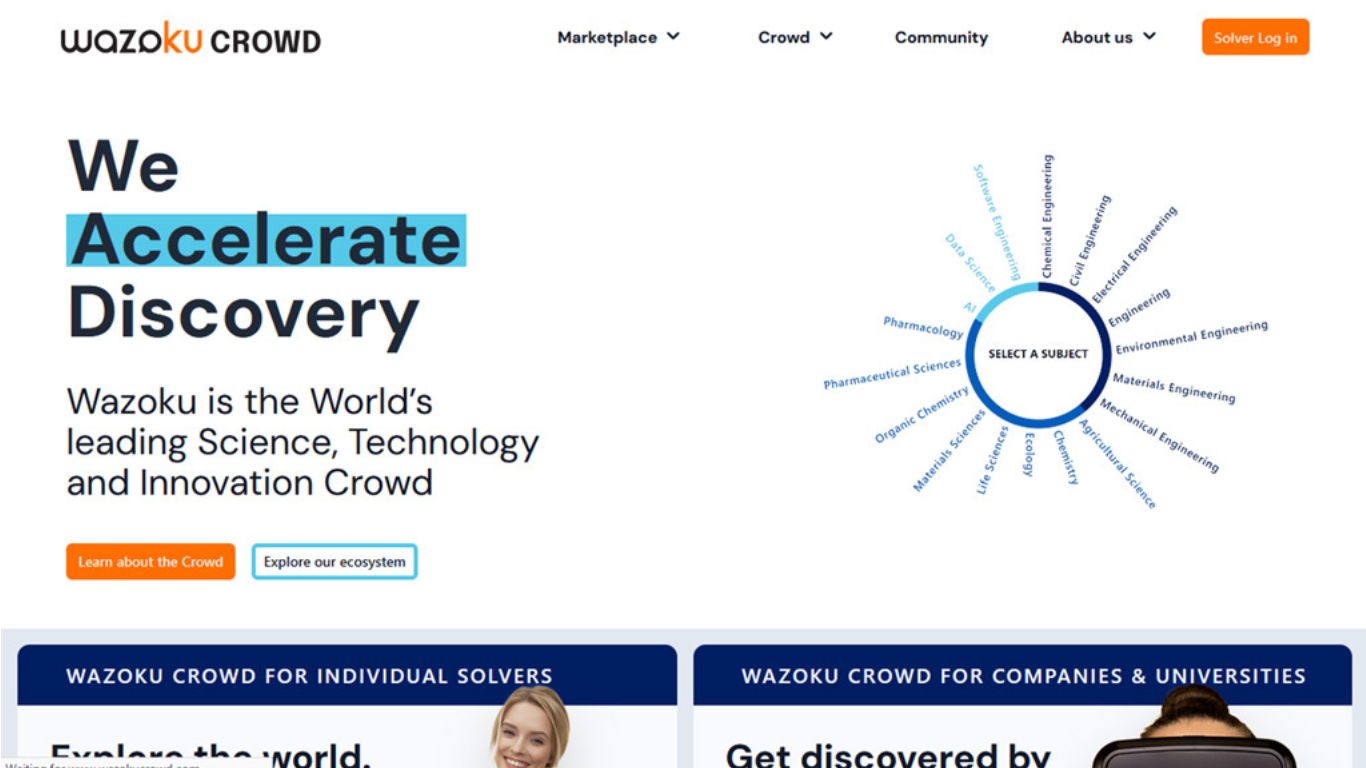
One impactful partnership on Wazoku Crowd has been with Habitat for Humanity. Through this collaboration, participants developed solutions to improve access to clean water and designed ways to retrofit homes for better protection against natural disasters.
Wazoku Crowd’s User Interface and Key Features
Wazoku Crowd offers a straightforward, user-friendly interface that allows organizations to post detailed challenges, receive solutions, and manage intellectual property easily. The platform includes clear descriptions for each challenge and structured forms for solution submissions, making it easy for participants to contribute effectively.
Understanding the different types of crowdsourcing is the first step in driving open innovation. Knowing the platforms and methods is only part of the equation. To ensure your crowdsourcing efforts lead to measurable success, you need a strategic approach that aligns with your innovation goals.
Here are seven practical tips to help open innovation managers monitor and optimize crowdsourcing initiatives effectively.
7 Practical Tips for Implementing Crowdsourcing for Open Innovation
- Define Clear Objectives
Start with specific, measurable goals. Clearly defined objectives set the foundation for focused and impactful crowdsourcing efforts, whether you aim to solve a particular challenge, generate new product concepts, or optimize existing processes. - Select the Right Platforms and Tools
Choose platforms that align with your objectives and attract the audience you need. Evaluate each platform’s functionality, user base, and usability to ensure it maximizes participation and engagement. - Establish a Structured Submission Process
Set up a transparent, organized process for idea submission. Clearly define guidelines and evaluation criteria, and consider using project management tools like Trello or Asana to streamline submissions and track progress. Designate a review panel to assess ideas based on predetermined standards. - Implement a Feedback Mechanism
Create a feedback loop to maintain participant engagement. Offer automated responses, personalized feedback, or public recognition where appropriate. Tools like Slack or Microsoft Teams facilitate consistent, interactive communication with contributors. - Promote an Inclusive Environment
Reach a broader audience by fostering inclusivity. Use diverse outreach strategies, inclusive language, and support channels to ensure contributors from various backgrounds feel welcome and valued. - Integrate Ideas with Existing Innovation Processes
Ensure a seamless transition of viable ideas into product development, R&D, or strategic planning workflows. Use project management tools like JIRA to integrate these ideas into established pipelines efficiently. - Monitor and Evaluate Using KPIs
Assess your crowdsourcing initiatives regularly with key performance indicators (KPIs) such as idea volume, quality, engagement levels, and their impact on innovation outcomes. Analytics tools like Google Analytics or Tableau can provide insights into your crowdsourcing metrics for continuous improvement.
Conclusion
Crowdsourcing has become crucial for enhancing open innovation strategies providing organizations access to various ideas and expertise. By leveraging the collective intelligence of diverse contributors, businesses can reduce costs and create a collaborative environment that fuels innovative, creative solutions.
GreyB specializes in helping businesses navigate the complexities of innovation and intellectual property.
Partnering with a team like GreyB’s ensures you uncover growth opportunities, safeguard your IP, and stay ahead in today’s competitive landscape. Our deep expertise in technology scouting, competitive analysis, and market research empowers you to make informed decisions confidently. We don’t just offer insights—we provide actionable strategies tailored to your unique needs, ensuring your innovation efforts are protected and strategically aligned with the future.
Reach out to explore how we can collaborate on your next big move.
Also read: 7 Open innovation pitfalls that could sabotage your success

